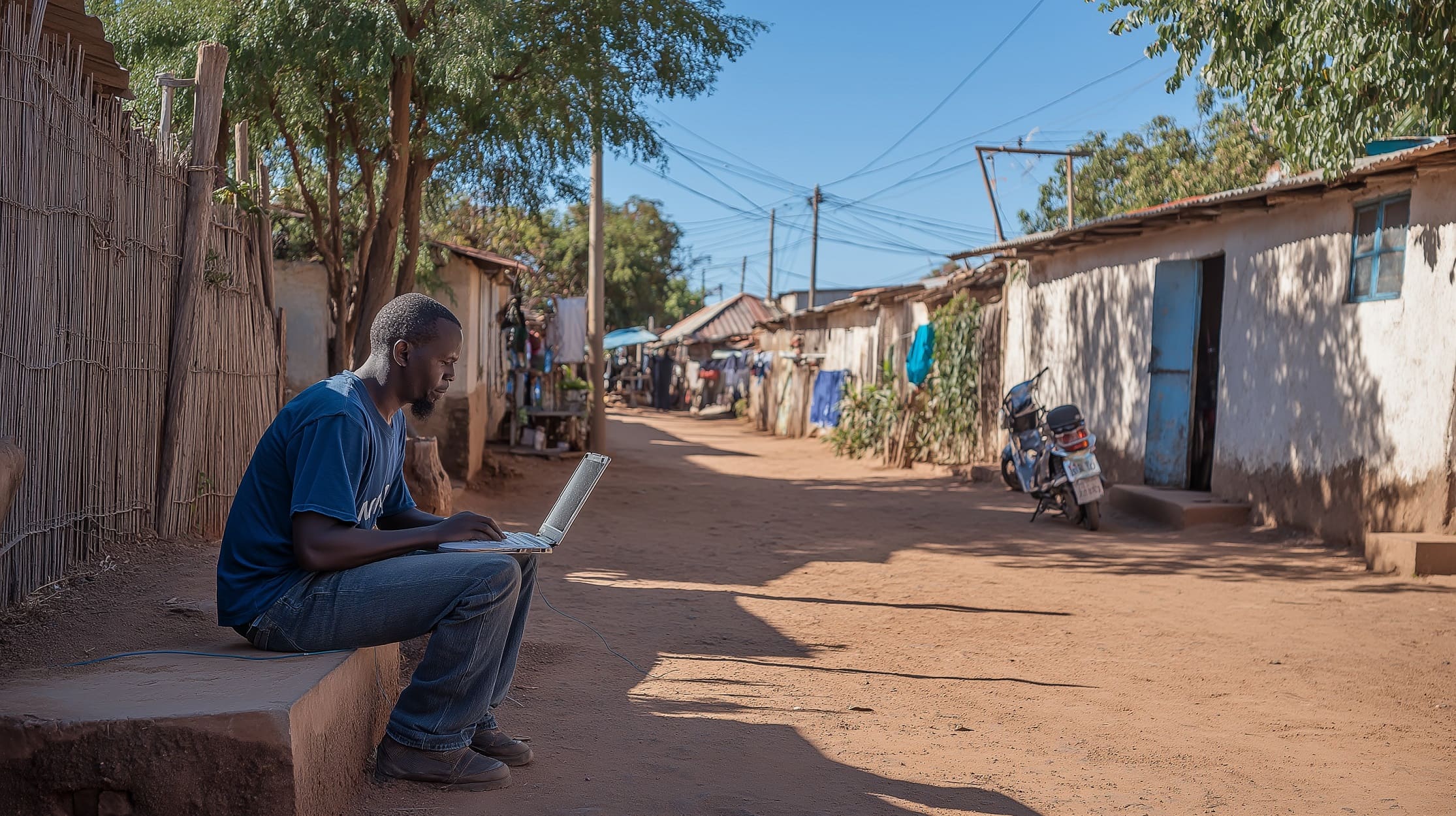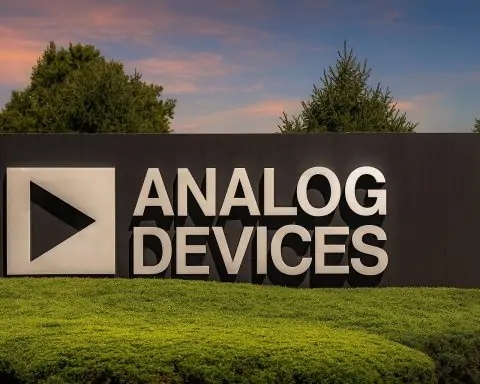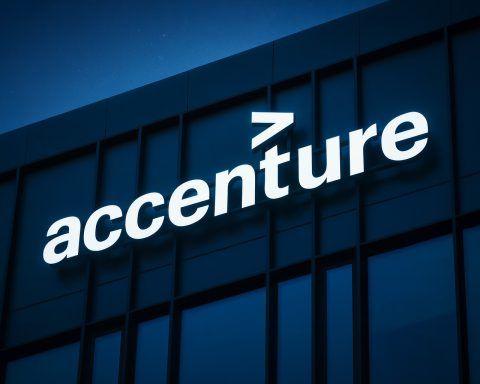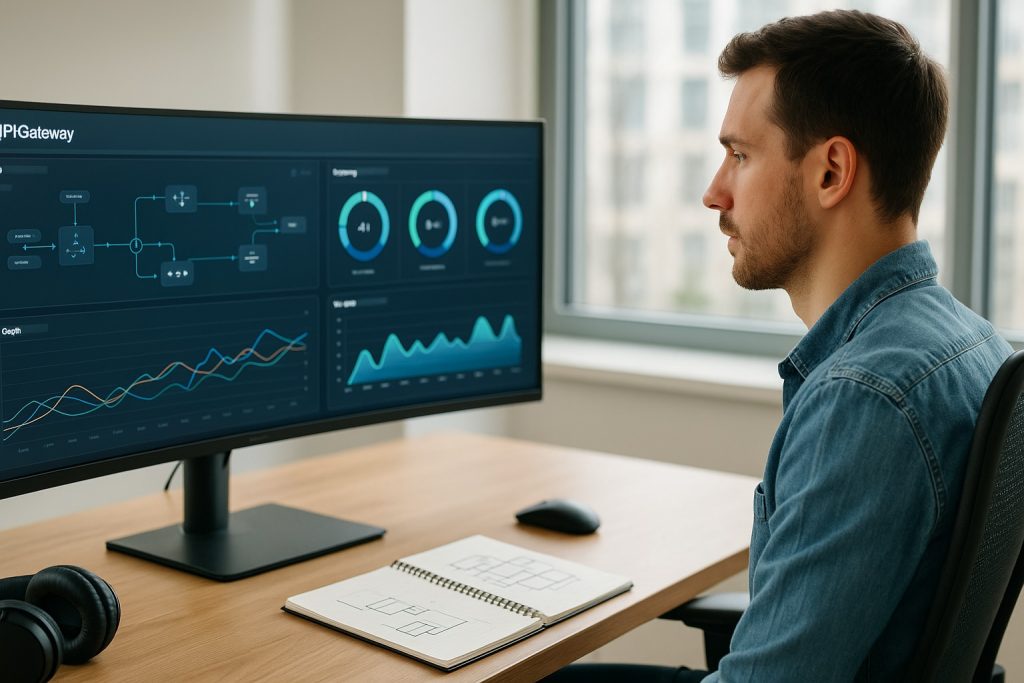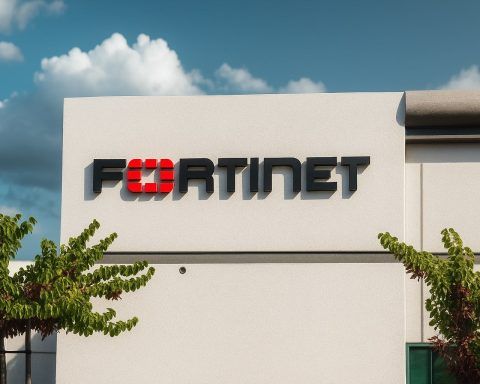- As of December 2023, ZICTA reported about 12.6 million internet subscriptions, representing 64.1% penetration.
- DataReportal’s Digital 2024 estimate puts Zambia at 6.51 million internet users, about 31.2% of the population, due to multiple SIM ownership inflating subscription counts.
- Over 99% of internet users rely on mobile broadband, while roughly 99,000 fixed-line subscriptions existed nationwide in 2023.
- Median download speeds were about 15 Mbps on mobile and 8.7 Mbps on fixed broadband in early 2023; by February 2024 mobile speeds rose to ~19.6 Mbps and fixed to ~21.3 Mbps, with uploads ~7.6 Mbps mobile and 5.3 Mbps fixed.
- MTN launched Zambia’s first 5G service in November 2022, Airtel launched 5G in July 2023, and by 2023 there were about 1.3% of telecom sites with 5G, serving roughly 2% of the population.
- By 2023 the total number of cellular tower sites reached 3,568, with 20 new towers built in 2023, and broadband coverage (3G/4G) approaching 96% of the population per government targets for 2024.
- Starlink launched in Zambia in October 2023 after a June 2023 license grant; equipment costs ~K10,744 (~$500) and monthly ~K771 (~$36), with early uptake around 2% of subscriptions by early 2025.
- The Universal Access and Tower program aims to install 980 towers by 2025; by late 2023, over 800 towers were in place or under construction, including 160 new towers in 2023.
- The government targets 100% network coverage by 2030.
- Airtel accounts for about 56% of internet-enabled SIMs, MTN about 28%, together ~84%, with Zamtel around 7% and Beeline a few percent.
Overview of Internet Penetration and Usage in Zambia
Internet usage in Zambia has grown substantially over the past decade, though estimates of penetration vary depending on measurement. As of December 2023, official data from the Zambia Information and Communications Technology Authority (ZICTA) reported about 12.6 million internet subscriptions, representing 64.1% penetration (subscriptions per 100 inhabitants) [1]. However, independent estimates counting unique users show a lower usage rate – DataReportal’s Digital 2024 report estimated 6.51 million internet users, about 31.2% of the population [2]. (The discrepancy is explained by many Zambians owning multiple SIM cards, inflating subscription counts [3].) In absolute terms, internet uptake has accelerated: the share of the population using the internet rose from around 20% in 2020 to 31% in early 2024 [4] [5], reflecting improved access and affordability.
The vast majority of users in Zambia access the internet through mobile networks. Over 99% of internet users rely on mobile broadband connections (smartphones or cellular modems), versus only about 99,000 fixed-line internet subscribers nationwide as of 2023 [6]. This heavy dependence on mobile access is due to the limited reach of fixed broadband and the relatively lower cost of mobile data. Nonetheless, fixed broadband usage, while small, is growing in urban centers (primarily via fiber-optic and wireless ISPs).
Internet speed and quality: Connection speeds in Zambia remain modest but have been improving. In early 2023, median download speeds were about 15 Mbps on mobile and 8.7 Mbps on fixed broadband [7]. By February 2024, mobile median download speeds had risen to ~19.6 Mbps, and fixed broadband speeds to ~21.3 Mbps, as fiber deployments expanded [8]. Upload speeds lag (median ~7.6 Mbps mobile, 5.3 Mbps fixed) [9], and rural users often experience much slower connections than these national medians. Overall, Zambia’s internet speeds are below the global average, but ongoing network upgrades are narrowing the gap. The Internet Society’s Internet Resilience assessment gives Zambia a low resilience score of 32%, noting that the country’s average internet usage rate (31%) is still below the African average of ~39% [10], and that diversity of service options remains limited.
Broadband Infrastructure: Fiber, Mobile, and Wireless Networks
Zambia’s broadband infrastructure consists of a mix of fiber-optic backbone networks, mobile cellular networks (2G/3G/4G and emerging 5G), fixed wireless systems, and satellite links. The country is landlocked, so international connectivity is achieved via terrestrial fiber links to submarine cable landing points in neighboring countries. Key aspects of the infrastructure include:
- National Fiber-Optic Backbone: Zambia has invested in extensive fiber networks over the past 15 years. A 565 km government fiber backbone built in 2006 was later expanded into an 18,000 km nationwide fiber network by 2022, reaching most districts [11]. This fiber backbone, built with both public and private investment, connects to undersea cables through Tanzania, Zimbabwe, and other neighbors, dramatically reducing the cost of international bandwidth since the early 2010s. According to the U.S. International Trade Administration, the fiber network provides mobile and data backhaul coverage to about 92% of the population [12]. Several operators maintain fiber infrastructure, including Zamtel (the state-owned telco) and international carriers like Liquid Intelligent Technologies. Liquid (CEC Liquid Telecom) operates one of the largest fiber networks, including a fully redundant cross-country network and metropolitan fiber in Lusaka and other cities [13] [14]. Fiber-to-the-home (FTTH) services were introduced in Lusaka as early as 2015, when Liquid launched packages up to 100 Mbps – then the fastest in Zambia [15]. Today, fiber broadband is available in major urban areas (Lusaka, Ndola, Kitwe, etc.), offering unlimited high-speed plans that can reach 50–100 Mbps, though the footprint is still relatively limited to higher-density and affluent neighborhoods.
- Mobile Broadband Networks: Mobile operators provide the primary means of internet access across Zambia. The country has GSM coverage over most of its territory via 2G/3G, and in the last decade operators have rolled out 4G LTE widely. By 2023, roughly 83% of Zambians had access to a 4G signal from at least one operator [16]. The two largest mobile carriers (MTN and Airtel) have also begun deploying 5G in select areas: MTN launched Zambia’s first 5G service in November 2022, activating 5G sites in six major cities [17], and Airtel followed with its own 5G launch in July 2023 [18]. As of 2023, 5G sites accounted for only 1.3% of all telecom sites in the country [19] (on the order of a few hundred 5G base stations), so 5G coverage is still very limited (estimated ~2% of the population had a 5G signal available in 2023) [20]. Meanwhile, 4G sites make up about 30% of mobile network sites, with the remainder still 2G/3G [21]. The government has even directed operators to begin phasing out 2G and 3G networks in favor of 4G, to improve quality and spectrum efficiency [22]. Overall, mobile network infrastructure has grown steadily: the total number of cellular tower sites increased to 3,568 sites by 2023 [23]. To extend coverage, ZICTA and the operators have been adding new towers each year (20 new towers were built in 2023) [24]. Thanks to these efforts, basic mobile voice/SMS services reach over 90% of the population, and broadband (3G/4G) coverage is approaching ~96% of the population, according to government targets for 2024 [25].
- Fixed Wireless and WISP Networks: In areas lacking fiber infrastructure, fixed wireless is an important alternative for broadband. A number of Internet Service Providers employ microwave radio links, WiMAX, or LTE-based fixed wireless to serve homes and businesses. For example, Paratus Zambia, a growing ISP, uses a combination of fiber and microwave radio to deliver home internet. In 2024 Paratus launched a new consumer broadband service offering both fiber and wireless (microwave) packages with speeds ranging from 10 Mbps up to 100 Mbps [26] [27]. Notably, Paratus offers unlimited data plans (e.g. a 20 Mbps uncapped plan available via fiber or wireless) to attract home users [28]. Other fixed-wireless providers have operated in the market as well – for instance, iConnect (formerly Africonnect) historically provided WiMAX-based internet in Lusaka and Copperbelt cities. The major mobile operators also offer fixed-wireless solutions: Airtel and MTN sell 4G/5G home routers (“Smartbox” or MiFi devices) that use their mobile networks to provide broadband in homes. Airtel, for example, markets an “Airtel Home Broadband” 4G/LTE service and even an unlimited 5G home plan at 10 Mbps for about K1,350 per month (≈ $60) [29]. These fixed-wireless options are important for customers who want home Wi-Fi and higher usage caps than a phone alone would allow, especially in areas where fiber is not yet available.
- Legacy DSL and Copper: Zambia’s fixed telephone infrastructure is relatively limited, and as a result traditional DSL internet (over copper lines) has a small footprint. Zamtel, the incumbent telco, has some ADSL lines in urban centers, but the number of active DSL subscribers is low (part of the ~99k fixed subscriptions noted earlier [30]). Most households have skipped fixed telephone lines entirely in favor of mobile. As fiber and wireless solutions expand, legacy copper-based internet is being phased out or upgraded.
Overall, Zambia’s broadband infrastructure heavily favors wireless delivery (mobile or fixed-radio) for last-mile access, supported by a robust fiber backbone for backhaul. This model has allowed relatively rapid expansion of coverage, though often at the expense of speed and quality in rural areas. The government acknowledges that infrastructure gaps remain – especially in remote rural regions which may not yet be economically viable for commercial operators. Initiatives are underway (detailed below) to build out towers and other infrastructure in under-served areas as part of universal access goals.
Major Internet Service Providers (ISPs) in Zambia
Zambia’s ISP market includes mobile network operators, fixed broadband providers, and emerging satellite services. However, it is highly concentrated, with the top two mobile companies controlling the majority of subscriptions [31]. The table below summarizes key providers, their service offerings, coverage, and typical pricing models:
Table 1: Major Internet Service Providers in Zambia
| Provider | Service Types | Coverage & Network | Pricing Models |
|---|---|---|---|
| Airtel Zambia (Bharti Airtel) | Mobile broadband (2G/3G/4G, launching 5G); some fiber & fixed-wireless offerings (Airtel Home) | Nationwide mobile network covering ~90%+ of population (urban & rural). 5G launched in Lusaka and a few cities (2023). Limited fiber-to-the-home in parts of Lusaka [32] [33]. | Prepaid mobile data bundles (e.g. 1 GB, 5 GB, etc.) and weekly/monthly packs. Postpaid plans for heavy users. Home broadband router plans (4G/5G) with fixed monthly fees, including an unlimited 10 Mbps plan ~K1,350 (~USD 60) [34]. |
| MTN Zambia (MTN Group) | Mobile broadband (2G/3G/4G, 5G); enterprise fiber & fixed-wireless solutions | Nationwide mobile network similar to Airtel in coverage. First to launch 5G in 2022 (sites in Lusaka, Ndola, Kitwe, etc.) [35]. Offers fiber connectivity to businesses and possibly FTTH in limited areas (branded as MTN Broadband). | Prepaid data bundles for mobile users (daily, weekly, monthly packages). Some unlimited or high-capacity plans for corporate clients. MTN offers home internet via 4G/5G routers with monthly data caps or unlimited options in select plans. Pricing competitive with Airtel (e.g. similar bundle rates). |
| Zamtel (Zambia Telecommunications Co.) | Mobile (2G/3G/4G) and fixed-line services (ADSL, fiber backbone). Also offers fixed 4G LTE “Home Lusaka” and public Wi-Fi hotspots. | Third-largest mobile operator; network coverage nationwide but smaller subscriber share (~7%). Operates the state-owned fiber backbone and some ADSL lines in cities. Rolled out 4G LTE in main urban areas and expanding to more towns. Also deploying government-backed free Wi-Fi in some public areas (ZamFree initiative) [36]. | Prepaid mobile data (similar bundle structure to rivals). Zamtel’s mobile data tends to be priced slightly lower to compete. Fixed broadband (ADSL) offered where available on monthly subscriptions (various data caps). Zamtel has introduced free Wi-Fi hotspots in select cities (subsidized service) [37]. |
| ZedMobile (Beeline) | Mobile broadband (4G LTE, planning 5G) | New entrant launched in late 2022 as Zambia’s 4th mobile operator [38]. Currently focused on urban coverage (Lusaka initially) and expanding network. Expected to offer 4G across major cities and possibly rural areas via roaming or infrastructure sharing. | Competitive prepaid data and voice bundles targeting cost-sensitive users. As a new operator, may offer promotions or unlimited night data, etc. (Detailed pricing not widely published yet). Aims to attract users with affordable plans and high-speed 4G. |
| Liquid Home (Liquid Intelligent Technologies) | Fixed broadband: Fiber-to-the-Home (FTTH) in cities; some wireless broadband; enterprise services (leased lines, MPLS) | Presence in Lusaka, Ndola, and other towns. Operates a national fiber network and provides wholesale capacity. FTTH network passes tens of thousands of urban homes [39]. Also offers VSAT/satellite for enterprise backup. | Unlimited fiber packages with flat monthly fees. For example, Liquid has offered plans up to 30 Mbps or higher, with free installation promos [40] [41]. Pricing tends to be at the high end (targeting businesses and affluent residential users), but service is premium (SLAs, symmetric speeds). |
| Paratus Zambia | Fixed broadband: Fiber and Microwave Wireless to homes and businesses; data center and cloud services | Focused in Lusaka (initial rollout), with plans to extend to other cities [42]. Builds its own fiber last-mile in new areas and uses wireless links to reach places where laying fiber is difficult [43]. Part of the pan-African Paratus Group. | Offers uncapped (unlimited) Home Internet packages. Speeds range 10–100 Mbps; an unlimited 20 Mbps plan (fiber or wireless) is positioned at a “highly competitive” monthly fee [44]. Paratus emphasizes reliability (24/7 support, included firewall/security features) and often runs promotions (e.g. first month free) [45]. |
| Starlink (SpaceX) | Satellite broadband (LEO) – high-speed internet via satellite dish | Country-wide coverage (requires clear view of sky). Service launched in Zambia in October 2023, making it available in even the most remote areas [46]. No terrestrial infrastructure needed; reach extends to rural villages, wilderness, etc. Potential to serve areas unreached by fiber or cell towers. | Equipment: one-time cost ~K10,744 (≈ $500) for the Starlink dish/kit [47]. Subscription: ~K771 per month (≈ $36) for unlimited data [48]. Starlink requires upfront investment but provides high-speed (50–200 Mbps) low-latency internet. No data caps, 30-day trial period [49]. |
(Exchange rate note: 1 Zambian Kwacha (K) ≈ $0.05–0.06 USD as of 2023–2024.)
As shown above, the mobile operators Airtel and MTN dominate the market – together they account for roughly 84% of internet subscriptions in Zambia [50]. Airtel (a subsidiary of India’s Bharti Airtel, previously Celtel/Zain) is the market leader with an estimated 56% share of internet-enabled SIMs, followed by MTN at about 28% [51]. Zamtel, despite its nationwide network, has around 7% share [52], reflecting its smaller customer base and past operational challenges. Beeline/ZedMobile is a new player with a few percent market share after launch [53], expected to grow if it expands coverage. On the fixed broadband side, ISPs like Liquid and Paratus are notable, but their user numbers are much smaller than the mobile operators. (Notably, Liquid, MTN and Zamtel together accounted for ~97% of fixed internet subscriptions in 2021 [54], indicating that smaller ISPs have historically had minimal market presence.)
Coverage areas: Urban centers (Lusaka, the Copperbelt cities, Livingstone, etc.) enjoy the greatest choice of ISPs and technologies – all mobile networks have strong urban coverage, and fiber or high-capacity wireless services are available from multiple providers. In rural areas, by contrast, internet access is usually only via the big mobile operators’ 2G/3G/4G networks (and now Starlink). Some remote towns and villages might have only one mobile operator’s signal available. The government’s tower construction projects (see next section) are specifically targeting rural coverage gaps where no operator currently provides service.
Pricing models: Zambia’s mobile internet is sold predominantly on a prepaid, usage-capped basis. Users purchase data bundles (e.g. 1 GB, 5 GB, 10 GB) valid for a certain period. Prices have been trending downward as competition and infrastructure improve, but internet data is still not cheap relative to incomes. A 2022 analysis showed 1 GB of mobile data cost on average $1.36 in Zambia [55] – more affordable than in some neighboring countries, but higher than the African average. Many Zambians therefore limit their usage to what they can afford in small bundles (e.g. daily WhatsApp packs or nightly data deals). The introduction of unlimited fixed broadband plans (by Liquid, Paratus, Airtel’s 5G, etc.) is recent – these plans target businesses and upscale residential users and are priced in the tens of dollars per month.
It’s worth noting that the ISP market in Zambia is not very competitive by global standards. Aside from the handful of major players listed, there are few alternative providers, and most smaller ISPs rely on capacity leased from the big operators. Internet Society’s evaluation rates the market competitiveness as “Very Poor” for end-users [56]. However, regulatory changes (like a new converged licensing framework) have made it easier for new entrants to emerge, as evidenced by the arrival of ZedMobile and the licensing of Starlink.
Urban–Rural Digital Divide and Bridging Efforts
Zambia faces a significant digital divide between urban and rural populations. Urban residents are far more likely to have internet access, while the majority of rural Zambians remain offline. This disparity stems from differences in network coverage, electricity access, device ownership, and income levels:
- Internet access gap: In urban areas, roughly half of residents use the internet, whereas in rural areas the share is in the teens. One study found an urban internet penetration rate around 47% vs only 12% in rural areas in recent years [57]. ZICTA’s household surveys likewise show much higher usage of digital services in cities than in the countryside. The population distribution (about 46% urban vs 54% rural [58]) means millions in rural communities have yet to come online.
- Infrastructure gap: Mobile broadband coverage, while broad, still has blind spots in remote villages. Rural areas often have weaker signals and more congestion due to fewer towers. Many villages were historically covered only by 2G networks (suitable for calls/SMS but not internet). To address this, the government and regulator are actively investing in rural towers. The Universal Access Service Fund (UASF), managed by ZICTA, subsidizes infrastructure in underserved areas. In 2023–24, 51 new telecom towers were built with UASF support to extend mobile services to rural communities [59]. This is part of a larger program aiming to install 980 new towers by 2025 [60]. If achieved, that expansion will dramatically improve rural network coverage. Indeed, the government’s Digital Transformation Program has a goal of “exhaustive coverage” of the population by 2030 [61] – essentially, ensuring every Zambian can get a signal.
- Electricity and reliability: Many rural areas lack reliable electricity, which affects both network uptime and users’ ability to power devices. (Telecom towers need power, and phones need charging.) Recent drought-related power shortages in Zambia have led to load-shedding even in cities, disrupting connectivity when tower backup power is insufficient [62] [63]. Off-grid and solar solutions are increasingly important for rural tower sites and charging stations. The government’s rural connectivity efforts often include solar-powered tower installations to mitigate the electricity gap.
- Device and literacy gap: Rural residents are less likely to own internet-capable devices. According to a GSMA study, only about 7% of people over age 10 in rural areas owned a smartphone, versus roughly one-third in urban areas (around 36%) in recent years. Low literacy and digital skills in some rural communities also hinder internet adoption. There are ongoing digital literacy and school connectivity programs (often in partnership with NGOs or companies like Huawei and Google) aiming to train users and demonstrate the benefits of internet access at the community level.
Efforts to bridge the divide are multi-faceted. Aside from building towers, the government has launched initiatives such as community access points and free Wi-Fi zones. In 2024, ZICTA rolled out the “ZamFree” public Wi-Fi initiative, which offers free internet hotspots in selected cities [64] – primarily urban for now, but it’s a model that could extend to rural towns (for example, placing Wi-Fi at post offices, schools, or chief’s palaces). There are also pilot projects for connecting schools and clinics to the internet, recognizing that public institutions can serve as hubs for broader community access. The rise of satellite broadband (Starlink) is another game-changer for rural connectivity (discussed in the next section), as it can bypass the need for local infrastructure.
The Zambian President Hakainde Hichilema has emphasized digital inclusion, stating that “access to technology & information is no longer a luxury” and applauding steps toward affordable digital access for all [65]. This high-level political will, combined with regulatory measures (e.g. reduced taxes on smartphones or data, if implemented) and ongoing infrastructure projects, gives hope that the urban-rural gap will gradually narrow. By bringing network coverage to remote areas and lowering cost barriers, Zambia is striving to ensure that the benefits of the internet reach its rural farmers, students, and entrepreneurs. The challenge remains significant – many rural Zambians still cite cost, lack of devices, or lack of knowledge as reasons for not using the internet – but the trajectory is toward greater inclusion.
The Role of Satellite Internet in Zambia (Starlink and Others)
Satellite internet is emerging as an important component of Zambia’s connectivity landscape, especially for remote and underserved areas. Historically, satellite links (VSAT) were used in Zambia mainly by businesses, NGOs, or government offices in areas without terrestrial connectivity. These traditional satellite services (using geostationary satellites) were often expensive, with high latency and low speeds, making them a last resort. However, the arrival of low-Earth orbit (LEO) satellite broadband – notably SpaceX’s Starlink – in 2023 has dramatically changed the scene.
Starlink in Zambia: In October 2023, SpaceX officially launched Starlink service in Zambia, making it the sixth African country with Starlink availability [66]. The Zambian government had earlier granted Starlink an operating license in June 2023, after successful trials [67]. Starlink’s network of LEO satellites can deliver high-speed internet (50–200 Mbps) with latency as low as ~20-40 ms, far better performance than legacy VSAT. Crucially, Starlink can reach rural and remote users that are far from fiber or cell towers – all that is required is a clear view of the sky for the small dish.
For Zambia, a country with many sparsely populated areas, this is a significant development. Starlink is expected to extend broadband connectivity to disadvantaged users in remote parts of the country [68]. It provides an immediate solution for places that may otherwise wait years for terrestrial networks to arrive. For example, a rural clinic or farm can now install a Starlink kit and get connectivity similar to urban broadband.
Costs and uptake: The Starlink service does come with high upfront costs by local standards. At launch, the hardware kit cost about K10,744 (approximately USD $500) and the monthly subscription was around K771 (about $36) [69]. These prices have been changing as Starlink adjusts regional pricing; recent figures suggest equipment around K5,250 and monthly fees ~K800 on the official website [70]. While $30–$50 per month is expensive for average consumers in Zambia (where many live on a few dollars a day), it can be viable for businesses, community cooperatives, or well-off rural residents. Additionally, Starlink has been offered on a 30-day trial with no contract and no data caps [71], and it often partners with local resellers. Notably, Paratus (the ISP) signed a reseller agreement to distribute Starlink in Zambia and other African markets [72], which could help with local installation and support. E-commerce company Jumia has also partnered with Starlink to sell kits in Africa [73].
Early adopters of Starlink in Zambia include lodges in tourism areas, rural ISPs extending service to villages, and some government offices looking for backup connectivity. Within a few months of launch, Starlink reportedly captured a small but notable market share – about 2% of internet subscriptions by early 2025 [74] (though this figure may refer to share of international bandwidth or a specific metric). The presence of Starlink is already fostering competition: terrestrial ISPs have to consider lowering prices or improving rural offerings as satellite becomes an alternative.
Advantages: The biggest advantage of satellite internet in Zambia is coverage. It can provide connectivity anywhere, regardless of terrain or distance. For a country with areas separated by lakes, floodplains, or low-density settlements, satellite avoids the high cost of laying fiber or building many towers. It is also relatively quick to deploy – one can get online within days of ordering a kit, rather than waiting for infrastructure projects. Satellite can also offer redundancy during outages (for instance, if fiber cuts or power blackouts take down mobile networks, a satellite link might still operate with a generator).
Limitations: Despite its strengths, satellite internet has limitations. Even with LEO technology, performance can be inconsistent – Starlink noted at launch that users could expect “brief periods of intermittent service and high latency” in the early phase [75]. Activities like competitive online gaming or real-time video calls might be unstable at times (though these are improving as more satellites are launched). Another limitation is cost and power – the Starlink dish consumes significant power and requires equipment that may be hard to maintain in very remote areas without skilled technicians. The upfront cost remains a barrier for individual low-income users. Additionally, weather can affect satellite signals (heavy rain can degrade the connection), which is a consideration in tropical regions.
Aside from Starlink, other satellite providers are either active or on the horizon. For example, companies like YahClick, Avanti and others have offered Ka-band VSAT services in Africa (including Zambia) through local telecom partners, mainly targeting enterprise and government users. OneWeb, another LEO satellite constellation, is also expanding in Africa, and could become available in Zambia in the near future. However, as of 2025, Starlink is the most prominent satellite option in the consumer market.
In summary, satellite internet has moved from a niche last-resort to a key pillar in Zambia’s connectivity mix. It particularly addresses the rural connectivity gap, aligning with the country’s goal of universal access. The government has welcomed these services as complementary to terrestrial networks. We can expect satellite internet to continue growing its footprint – possibly with community Wi-Fi hotspots fed by Starlink, or more ISPs bundling satellite backhaul for village networks – as Zambia works to bridge the digital divide.
Government Initiatives and Regulatory Environment
The Zambian government and regulatory authorities have been actively shaping the development of the internet sector through policies, programs, and reforms. Key government-led initiatives and aspects of the regulatory environment include:
- Universal Access and Tower Programs: As mentioned earlier, ZICTA (the regulator) is overseeing a major rural connectivity rollout funded by the Universal Access and Service Fund. The plan to install 980 communication towers by 2025 is central to extending mobile signals to unserved areas [76]. By late 2023, over 800 of those towers were already in place or under construction, with 160 new towers in 2023 alone as a push toward the target [77] [78]. This project directly addresses infrastructure gaps and is one of the largest such efforts in the region. The government has set a goal of achieving 100% network coverage by 2030 (practically meaning every inhabited locality should have at least basic voice/data service) [79].
- National ICT/Digital Strategies: Zambia has a vision for digital transformation outlined in various strategic documents. The SMART Zambia initiative and the National Electronic Government Plan (2023–2026) aim to digitize government services and promote ICT adoption across sectors [80]. The e-government plan is driving ministries to move services online (for example, applying for permits or accessing public records digitally). By increasing online services, the government creates more demand for internet access and also improves governance. In late 2023, Zambia finally enacted a long-discussed Access to Information law [81], which, along with e-government, can empower citizens in the digital domain. Additionally, the government launched Zambia’s National Artificial Intelligence (AI) Strategy in 2023, signaling support for advanced digital innovation and skills development [82]. Under a partnership with Google, an AI innovation center was established at the University of Zambia [83], which, while not directly about internet access infrastructure, helps build the digital ecosystem and human capacity.
- Support for Innovation and Startups: Recognizing the role of the internet in economic growth, Zambia has introduced policies to nurture the tech sector. A Start-Up Bill has been in the works (mentioned as introduced in 2024) [84] to create a more enabling environment for tech entrepreneurs. This may include incentives or reduced regulatory hurdles for ICT startups, potentially including local ISPs or community network operators. Moreover, Zambia has several tech hubs and incubators (e.g., BongoHive in Lusaka) that receive support and attract young people to digital careers – indirectly boosting digital adoption.
- Regulatory Reforms and Competition: ZICTA has implemented a converged licensing framework (since 2017) that simplifies how telecom licenses are granted [85]. This allowed companies to offer multiple services under one license and opened the door for new entrants like Beeline (ZedMobile). The licensing of a fourth mobile operator after many years is a deliberate move to increase competition. Similarly, ZICTA’s authorization of Starlink reflects a generally pro-innovation stance. At the same time, the regulator keeps a close eye on quality and consumer protection. Notably, ZICTA has penalized operators for poor service – in 2022 it fined Airtel, MTN, and Zamtel for failing certain quality benchmarks on their networks [86]. More recently, in late 2023, ZICTA ordered Airtel to compensate customers for network outages and subsequently fined the company in 2024 for not adhering to quality of service rules [87]. These actions send a message that the regulator expects operators to reinvest in network performance and treat customers fairly (Airtel had to develop an action plan to fix its recurring outages [88]). Zambia has also been encouraging infrastructure sharing among operators to avoid duplication of towers and reduce costs, which can improve rural coverage economics.
- Affordability Measures: The government has expressed concern about the high cost of internet and devices. While there’s no outright price regulation on data, Zambia has participated in regional initiatives to cut data prices. For example, in some periods the government removed import duties on smartphones or network equipment to make them cheaper. Civil society campaigns like #DataMustFall (echoing South African movements) and a local campaign in 2023 against high cost of living (#PassMeTheMic) have kept up pressure on the issue [89]. It’s expected that government will continue to use moral suasion on operators to offer affordable social bundles (for students, etc.) and possibly leverage the Universal Service Fund to subsidize access for low-income communities.
- Internet Governance and Rights: In terms of the regulatory environment affecting how Zambians use the internet, there have been positive steps recently. President Hichilema’s administration repealed a cyber law provision criminalizing defamation of the president in 2022 [90], which was seen as a boon for online free expression. And in 2023, Zambia established a Data Protection Commission to oversee privacy rights [91], aligning with global best practices. These moves improve user trust in internet services. However, challenges remain (e.g. mandatory SIM card registration with biometric data has raised privacy concerns, leading to a lawsuit against ZICTA [92]). Overall, the policy environment is slowly modernizing: new laws around cyber security, electronic transactions, and data protection have been or are being enacted to facilitate a safe digital economy.
- International Connectivity and ICT Infrastructure Investment: The Zambian government also works on regional cooperation for connectivity. For instance, Zambia is part of Smart Africa and other coalitions aiming to build regional fiber links. In 2022, Zambia signed an MoU with Burundi to develop a fiber link through Lake Tanganyika, potentially opening a new route to the Indian Ocean cables [93]. Additionally, state companies like ZESCO (the power utility) have fiber networks on power lines and collaborate with telecom operators to lease capacity. By promoting infrastructure projects and allowing multiple players to invest (public-private partnerships), the government hopes to ensure redundancy and ample bandwidth to meet future demand.
In summary, government initiatives in Zambia have a dual focus: expanding physical access and enabling digital adoption. The expansion of towers, promotion of new technologies (5G, satellite), and funding of rural connectivity all tackle the availability side of the internet. Meanwhile, policies to improve affordability, skill development, and the legal framework tackle the usage side – encouraging more people to come online and businesses to thrive. The regulatory environment is generally favorable to growth, with ZICTA balancing competition and consumer protection. One can say that Zambia’s government views the internet as a catalyst for development, and its actions – from infrastructure investment to legislative reforms – reflect a commitment to a more connected society.
Historical Trends in Internet Growth and Digital Adoption
Zambia was among the early adopters of the internet in sub-Saharan Africa, but its growth trajectory has been gradual and faced hurdles. A look at the historical trends:
- 1990s – Introduction of Internet: The first internet connection in Zambia came in the early 1990s. The University of Zambia (UNZA) had a pioneering role, installing dial-up and satellite links for email and basic web access [94]. In these early days, internet use was limited to academic and research circles. The general public had virtually no access aside from a few cyber cafés that emerged in Lusaka in the late 90s.
- 2000s – Slow but Steady Uptake: Through the early 2000s, Zambia’s internet penetration remained very low (on the order of 1–2% of the population in 2003). Connectivity relied on dial-up ISP services like ZamNet and Coppernet, and later some VSAT links. A significant development was the liberalization of the telecom sector – new mobile operators launched (Telecel/Zain and MTN joined Zamtel’s mobile arm). By the mid-2000s, mobile phones became common, and although at first these were just for voice/SMS, the stage was set for mobile internet. Zambia’s first cellular data networks were GPRS/EDGE (2.5G) and then 3G around 2008–2009 on a limited basis. Internet penetration by 2008 was still under 10%. However, around 2009–2010 two crucial things happened: mobile subscriber numbers exploded (mobile teledensity jumped, reaching ~67% by 2014 [95]) and international bandwidth costs fell due to the landing of undersea fiber cables on African coasts. Zambia capitalized on the latter by linking to multiple cables through neighbors. By 2010, fiber links to SAT-3 and SEACOM cables via Namibia, Tanzania, and South Africa were established [96] [97]. This reduced the price of internet bandwidth and improved speeds, allowing ISPs to offer slightly more affordable packages.
- 2010s – Mobile Internet Era: The 2010s saw faster growth in internet use thanks to mobile broadband. 3G networks spread to all provincial capitals and many towns. By around 2013–2014, all three mobile operators had launched 4G LTE (MTN was first with a pilot LTE network in 2013, followed by Airtel and Zamtel in the mid-2010s). Smartphone ownership started rising after 2010 as low-cost Android phones entered the market. From under 5% penetration in 2007, internet usage climbed to roughly 15–20% by 2015 [98] [99]. Facebook and other social media gained popularity, often accessed through mobile phones. The government’s decision to invest in a national fiber backbone (connecting all provinces) around 2011–2014 under Zamtel also boosted connectivity for 3G/4G expansion. Another trend in the 2010s was the advent of mobile money and digital financial services (M-Pesa style services by MTN and Airtel), which encouraged people to use mobile data services. By 2020, internet penetration reached about 20% of the population (roughly 3–4 million users) [100]. While this was a substantial increase in absolute numbers, Zambia lagged some peer countries and the global average, partly due to economic challenges in the latter 2010s (inflation and currency issues made phones and data relatively expensive).
- 2020s – Acceleration and New Technologies: The early 2020s have been a dynamic period. Despite the COVID-19 pandemic’s disruptions, it also underscored the importance of internet access for education and business, likely accelerating policy focus on ICT. Internet penetration jumped from ~22% in 2021 to 31% in 2024 [101] (as earlier noted), indicating that millions of new users came online in a short time. Factors in this surge include cheaper smartphones, expansion of 4G coverage to more rural areas, and perhaps the new political leadership from 2021 placing emphasis on digital initiatives. The introduction of 5G in 2022–2023 is a milestone, marking Zambia’s entry into next-gen mobile technology (one of the first in the region to launch 5G). Another major trend is the diversification of service offerings: FTTH fiber for homes (Liquid, Zamtel), public Wi-Fi hotspots, and satellite broadband have all become part of the mix by 2023. On the usage side, Zambians have increasingly embraced social media (over 2.7 million social media users by 2023) [102] and digital apps. Streaming entertainment and e-commerce remain limited by bandwidth and payment barriers, but are growing. The government’s digital services (e.g., online tax filing, passport applications) are slowly gaining traction, pushing more citizens to get online.
Historically, one challenge to internet growth was the cost of data and devices, which kept many lower-income people offline. This remains an issue but has improved: the cost of 1GB has dropped from around $8 in the early 2010s to roughly $1–2 by 2022 [103]. Another challenge was a lack of local content in local languages, though this too is changing with more Zambian creators and services online now.
In summary, Zambia’s internet growth can be characterized as late but accelerating. From virtually zero in 1995, to a slow climb in the 2000s, to a faster rise in the 2010s and 2020s. The country’s internet penetration is now catching up to the African average, and all indications are that the curve will continue upward as infrastructure improves and digital literacy spreads. The historical trend shows that breakthroughs (like new cables, 4G introduction, or a pro-ICT government agenda) have immediate positive effects on adoption. If that pattern holds, the continued roll-out of new infrastructure (5G, satellites, rural fiber) in the mid-2020s could push Zambia’s internet penetration to new heights, transforming how Zambians communicate, learn, and do business.
Key Challenges and Opportunities in Expanding Internet Access
Despite notable progress, Zambia faces several challenges in expanding internet access to all citizens, as well as significant opportunities that can be leveraged:
Challenges:
- Affordability of Services: The cost of internet access remains a major barrier for many Zambians. With average data prices around $1+ per GB [104] and entry-level smartphones costing a significant fraction of monthly income, the internet is still viewed as a luxury by low-income families. The broadband affordability target (1GB for <2% of monthly income, per UN Broadband Commission) is not yet met for a large portion of the population. Unless prices drop further or incomes rise, many people – especially in rural areas – will use the internet sparingly or not at all. The government and operators will need to continue efforts like free Wi-Fi zones, subsidized bundles for education, and zero-rating of important services to lower the cost barrier.
- Infrastructure Gaps and Quality: While coverage is improving, last-mile connectivity in remote and peri-urban areas can be challenging. Some regions (e.g., parts of Northwestern and Luapula provinces) still have patchy network coverage. Even where networks exist, network quality and capacity may be an issue – urban users often complain of congestion on 4G networks, and rural users might be stuck on slow 2G/EDGE connections if 3G or 4G upgrades have not reached them. Power grid unreliability exacerbates this; telecom sites going down during power cuts result in dropped connections. Building out resilient infrastructure (with backup power, sufficient backhaul capacity, etc.) is an ongoing challenge, one that requires significant capital investment by operators. Zambia’s landlocked geography also means it must maintain multiple international fiber routes to avoid internet outages when a single route faces a cut (cable breaks have caused nationwide slowdowns in the past). Maintaining and upgrading this physical infrastructure is a continuous task.
- Digital Literacy and Local Content: A subtler challenge is ensuring that people have the skills and relevant content to make internet use worthwhile. A portion of the population, especially older adults and those with limited formal education, may not see the relevance of the internet or may lack the skills to use it productively. There is a need for more digital literacy programs at the community level, teaching people how to use smartphones, access information, and stay safe online. Likewise, a growth in local language content and services would draw more users online – currently, much content is in English, which is a second language for many Zambians. The expansion of e-government and local apps (for farming, health, etc.) can create more reasons for all segments of society to connect.
- Economic Factors and Operator Viability: The telecom sector in Zambia has faced economic headwinds. Currency depreciation and inflation in recent years have raised the cost of imported telecom equipment and network operations [105]. Operators have cited increased operational costs (fuel for generators during load-shedding, forex losses, etc.) which squeeze their margins and could translate into higher prices for consumers. Ensuring the financial viability of ISPs while keeping prices reasonable is a balancing act. For example, there were rumors in 2024 that Airtel was considering exiting the market due to these challenges (which Airtel denied) [106]. The government must maintain a stable regulatory and economic environment to encourage continued investment by operators in network expansion.
- Cybersecurity and Trust: As more Zambians come online, issues of cybersecurity, fraud, and misinformation become more prominent. While not a direct access issue, if people fear online scams or privacy breaches, they may be hesitant to use the internet for sensitive transactions. Zambia’s high score improvement in the Global Cybersecurity Index (GCI) to 92.6% [107] shows the government’s commitment to cybersecurity, but the general public needs awareness (e.g., about mobile money scams, phishing). Building trust in online services (through robust data protection, user education, and policing cybercrime) is important to sustaining growth in internet adoption.
Opportunities:
- 5G and New Technologies: The nascent rollout of 5G networks offers an opportunity to vastly increase network capacity and enable new services (such as fixed wireless broadband at fiber-like speeds, IoT applications in agriculture or industry, etc.). As 5G coverage expands in Lusaka and other cities, it could become a competitive alternative to fiber for home internet, thereby increasing competition and potentially reducing prices for consumers. Furthermore, Zambia can leapfrog in some sectors by adopting technologies like IoT (for smart irrigation, logistics tracking) on the back of improved networks. The government’s push to make 4G the standard and gradually sunset 2G/3G [108] will also mean better average speeds and quality for users once legacy networks are refarmed.
- Satellite Broadband Expansion: The introduction of Starlink and similar satellite services is a huge opportunity to achieve near-total geographic coverage. The government and NGOs can capitalize on this by connecting schools, clinics, and community centers in remote areas via satellite where terrestrial solutions are not viable. The cost of satellite equipment may also decrease over time (Starlink’s prices in some countries have already been reduced as the constellation grows). If subsidies or community-shared access models are applied, even rural villages could have a communal Wi-Fi powered by satellite. This could spur economic opportunities in rural areas (e.g., e-commerce, access to agricultural information, digital finance). There is also an opportunity for local entrepreneurs to become resellers or installers for satellite internet, creating new jobs.
- Public-Private Partnerships (PPPs) and Investment: Zambia’s commitment to improving ICT has made it attractive for investment. International firms and development organizations may partner on initiatives – for instance, the World Bank or African Development Bank funding rural fiber projects, or tech companies like Google investing in digital skills training (as seen with the AI center). PPPs in telecom infrastructure (such as Liquid Telecom’s joint venture with Copperbelt Energy, or Huawei’s involvement in mobile network upgrades) can accelerate deployment of advanced technology. Continued investment in data centers and internet exchange points is another opportunity – Zambia already has 5 data centers and an IXP in Lusaka [109] [110], which can be built upon to improve local content hosting and reduce costs. A more robust domestic internet ecosystem would keep traffic local and speed up access.
- Growing Digital Economy: As internet access broadens, Zambia stands to benefit from the growth of its digital economy. There are opportunities in e-commerce, fintech, e-health, and e-learning that can be unlocked with wider connectivity. For example, mobile money usage is very high and still growing (ZICTA reported a 33% increase in mobile money transaction volume in 2024) [111] – this can be a platform for further financial inclusion and online services. E-commerce platforms, while nascent, could flourish if more Zambians come online (there is already significant informal buying/selling via Facebook and WhatsApp). Additionally, remote work and outsourcing become more feasible as broadband improves, meaning Zambian youth could tap into global digital jobs markets. The government’s focus on startup incubation is timely, as a larger user base provides a market for local app developers and content creators to serve.
- Regional Integration and Cross-Border Connectivity: Zambia is centrally located among eight neighboring countries. There’s an opportunity for it to become a regional connectivity hub by linking more aggressively to all neighbors. It already connects to undersea cables through Tanzania, Mozambique, and South Africa; completing links to Angola (for the upcoming SACS cable) [112] and to direct routes through DRC or Malawi could improve redundancy and perhaps allow Zambia to sell transit bandwidth to other landlocked countries like Malawi or Zimbabwe. Such regional integration can bring revenue and also political cooperation that ensures stable internet exchange across borders. Moreover, being part of initiatives like the Smart Africa Alliance means Zambia can share best practices and maybe benefit from bulk purchase deals (e.g., on satellite capacity or content delivery networks) at the continental level.
In conclusion, Zambia’s journey to widespread internet access is at a pivotal stage. The challenges – affordability, infrastructure, literacy – are real but not insurmountable, especially given the positive momentum and innovations in play. By addressing cost barriers, continuing to invest in infrastructure (both ground and satellite), and fostering a healthy competitive environment, Zambia can dramatically increase internet access in the coming years. The opportunities presented by new technology and a supportive policy environment could enable Zambia not just to catch up, but potentially to leap ahead in certain aspects of digital development. With committed effort from both the government and private sector, the vision of an inclusive, digitally empowered Zambia is increasingly within reach.
Sources:
- Zambia Information and Communications Technology Authority (ZICTA) – 2024 Annual ICT Market Report Highlights [113] [114].
- African Wireless Communications News – ZICTA to install more than 160 towers in 2023 [115] [116].
- DataReportal – Digital 2023: Zambia (Internet user statistics and speeds) [117] [118].
- Freedom House – Freedom on the Net 2024: Zambia (internet penetration and infrastructure data) [119] [120].
- Internet Society Pulse – Zambia Country Report (market share and coverage data) [121] [122].
- TechTrends Zambia – Paratus Zambia Launches Home Internet Service (fixed wireless and fiber packages) [123] [124].
- Connecting Africa – SpaceX’s Starlink launches in Zambia (satellite service details) [125] [126].
- Media Institute of Southern Africa (MISA) – Data must fall: Cost of mobile data in Southern Africa (2022) [127].
- U.S. Trade Administration – Zambia ICT Country Guide (2024) [128] [129].
- CEC Liquid Telecom – FTTH Launch Press Release (2015) [130] [131].
References
1. freedomhouse.org, 2. freedomhouse.org, 3. www.africanwirelesscomms.com, 4. freedomhouse.org, 5. www.indexmundi.com, 6. freedomhouse.org, 7. datareportal.com, 8. freedomhouse.org, 9. freedomhouse.org, 10. pulse.internetsociety.org, 11. www.trade.gov, 12. www.trade.gov, 13. www.cec.com.zm, 14. www.cec.com.zm, 15. www.cec.com.zm, 16. pulse.internetsociety.org, 17. freedomhouse.org, 18. freedomhouse.org, 19. freedomhouse.org, 20. pulse.internetsociety.org, 21. freedomhouse.org, 22. freedomhouse.org, 23. freedomhouse.org, 24. freedomhouse.org, 25. freedomhouse.org, 26. www.techtrends.co.zm, 27. www.techtrends.co.zm, 28. www.techtrends.co.zm, 29. airtel.co.zm, 30. freedomhouse.org, 31. pulse.internetsociety.org, 32. m.facebook.com, 33. www.airtel.co.zm, 34. airtel.co.zm, 35. freedomhouse.org, 36. techafricanews.com, 37. techafricanews.com, 38. freedomhouse.org, 39. www.cec.com.zm, 40. liquid.tech, 41. zm.liquidhome.tech, 42. www.techtrends.co.zm, 43. www.techtrends.co.zm, 44. www.techtrends.co.zm, 45. www.techtrends.co.zm, 46. www.connectingafrica.com, 47. www.connectingafrica.com, 48. www.connectingafrica.com, 49. www.connectingafrica.com, 50. pulse.internetsociety.org, 51. pulse.internetsociety.org, 52. pulse.internetsociety.org, 53. pulse.internetsociety.org, 54. www.zicta.zm, 55. misa.org, 56. pulse.internetsociety.org, 57. documents1.worldbank.org, 58. datareportal.com, 59. ipris.digital, 60. www.africanwirelesscomms.com, 61. www.africanwirelesscomms.com, 62. freedomhouse.org, 63. freedomhouse.org, 64. techafricanews.com, 65. www.connectingafrica.com, 66. www.connectingafrica.com, 67. www.connectingafrica.com, 68. www.connectingafrica.com, 69. www.connectingafrica.com, 70. www.starlink.com, 71. www.connectingafrica.com, 72. www.connectingafrica.com, 73. www.connectingafrica.com, 74. pulse.internetsociety.org, 75. www.connectingafrica.com, 76. www.africanwirelesscomms.com, 77. www.africanwirelesscomms.com, 78. www.africanwirelesscomms.com, 79. www.africanwirelesscomms.com, 80. www.trade.gov, 81. freedomhouse.org, 82. techafricanews.com, 83. techafricanews.com, 84. ipris.digital, 85. freedomhouse.org, 86. freedomhouse.org, 87. freedomhouse.org, 88. freedomhouse.org, 89. freedomhouse.org, 90. freedomhouse.org, 91. freedomhouse.org, 92. freedomhouse.org, 93. techpoint.africa, 94. freedomhouse.org, 95. www.refworld.org, 96. www.cec.com.zm, 97. www.cec.com.zm, 98. www.internetlivestats.com, 99. www.helgilibrary.com, 100. www.indexmundi.com, 101. freedomhouse.org, 102. datareportal.com, 103. misa.org, 104. misa.org, 105. techafricanews.com, 106. freedomhouse.org, 107. techafricanews.com, 108. freedomhouse.org, 109. pulse.internetsociety.org, 110. pulse.internetsociety.org, 111. techafricanews.com, 112. liquid.tech, 113. techafricanews.com, 114. techafricanews.com, 115. www.africanwirelesscomms.com, 116. www.africanwirelesscomms.com, 117. datareportal.com, 118. datareportal.com, 119. freedomhouse.org, 120. freedomhouse.org, 121. pulse.internetsociety.org, 122. pulse.internetsociety.org, 123. www.techtrends.co.zm, 124. www.techtrends.co.zm, 125. www.connectingafrica.com, 126. www.connectingafrica.com, 127. misa.org, 128. www.trade.gov, 129. www.trade.gov, 130. www.cec.com.zm, 131. www.cec.com.zm
